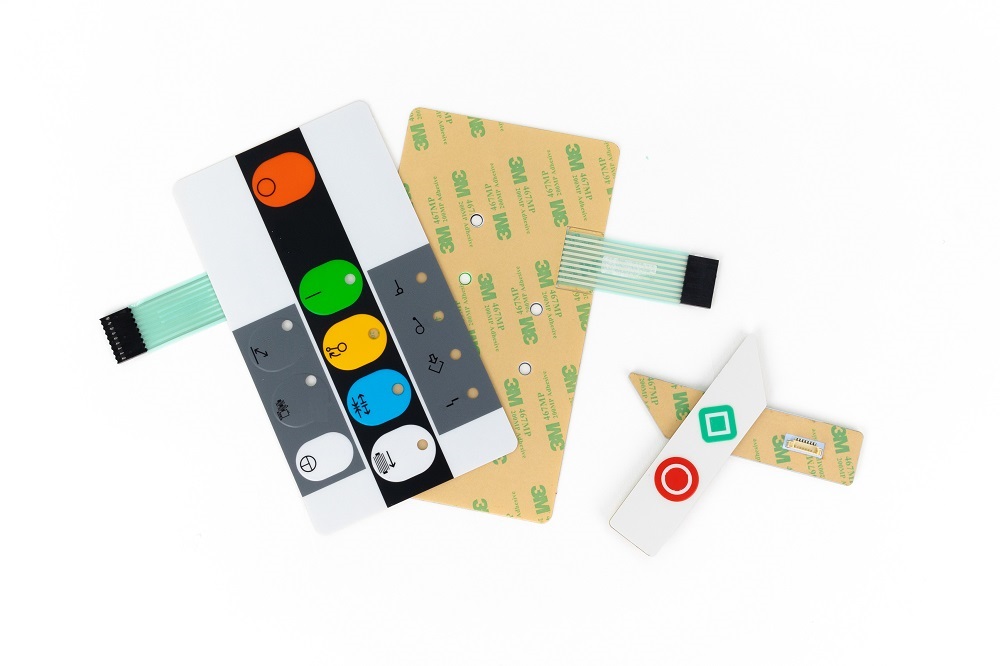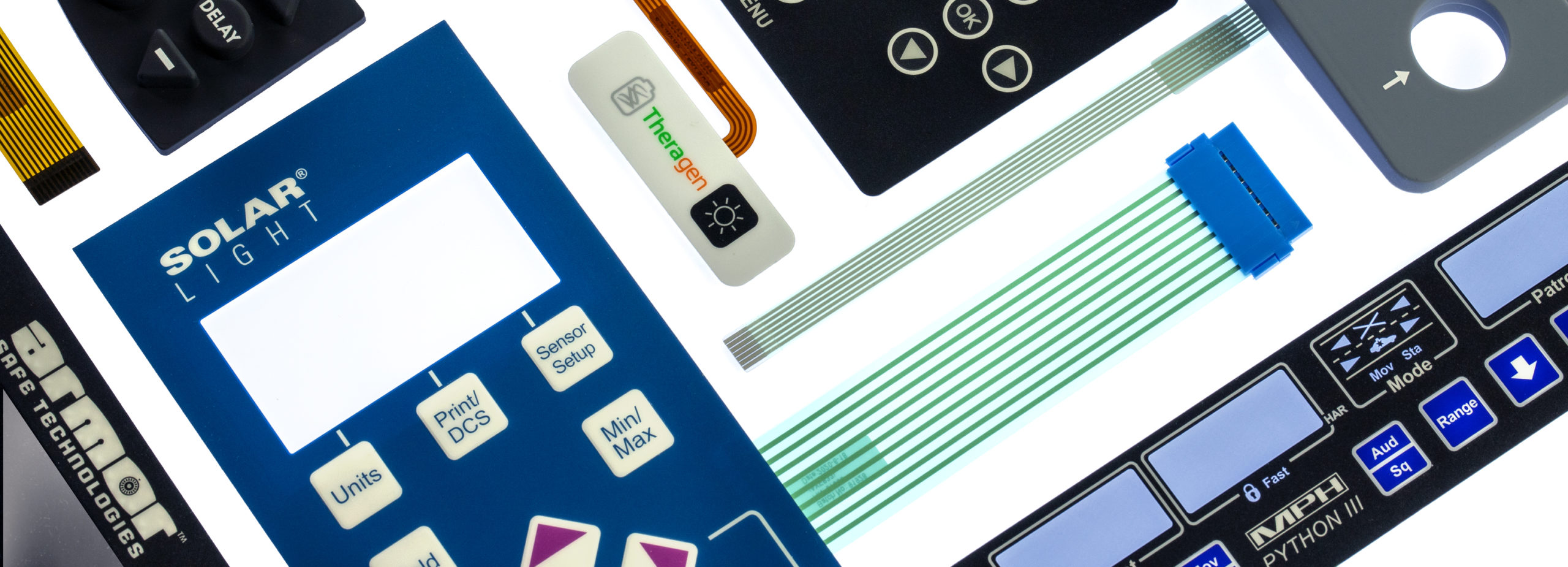How Membrane Switches Are Shaping the Future of Electronic Interfaces
How Membrane Switches Are Shaping the Future of Electronic Interfaces
Blog Article
Comprehending Membrane Layer Switches: The Secret to Dependable and sturdy Controls

What Are Membrane Buttons?
Membrane layer buttons are a sophisticated service in the realm of individual interface innovation, incorporating capability and layout seamlessly. These devices work as an interface in between customers and digital systems, incorporating numerous parts right into a portable layout. Commonly constructed from flexible, slim layers of products, membrane layer buttons are created to react to touch, allowing individuals to engage with equipment and electronic tools effectively.
The key components of a membrane layer button include a printed circuit layer, visuals overlay, and a spacer layer that protects against unplanned activation. The visuals overlay can be personalized to reflect brand identity or customer choices, improving visual appeals while guaranteeing functionality. Membrane buttons are generally used in various applications, consisting of clinical devices, customer electronic devices, and industrial tools, owing to their longevity and resistance to ecological elements such as moisture and dirt.
One of the key benefits of membrane buttons is their capability to withstand damage, making them suitable for high-traffic environments. In addition, they are lightweight and require very little space, permitting for ingenious designs in item development. Generally, membrane switches over represent a sensible and effective choice for contemporary digital user interfaces, weding modern technology with user-centric design principles.
Just How Membrane Changes Work
The procedure of membrane changes joints on a simple yet efficient device that translates individual input right into electronic signals. When an individual presses the switch, the leading layer deforms, permitting a conductive element in the circuit layer to make call with an equivalent conductive pad on the underside of the visuals overlay.
The design of membrane buttons can vary, however they usually incorporate domes or tactile elements to offer comments to the individual, boosting the total experience - membrane switch. The products made use of in membrane layer buttons, such as polyester or polycarbonate, add to their durability and resistance to environmental factors, including dampness and dirt. In addition, the published circuits are typically encapsulated, which protects them from damage over time.
Advantages of Membrane Layer Buttons

Additionally, membrane switches are known for their toughness. Created from durable products, they are immune to dirt, wetness, and physical wear, which dramatically expands their life-span contrasted to traditional mechanical switches. This resilience makes them especially suitable for high-traffic atmospheres and applications requiring longevity.
Another substantial advantage is the convenience of cleansing and maintenance. The smooth surface of membrane switches over anonymous decreases dirt build-up and is commonly unsusceptible spills, making them optimal for settings that require frequent sanitization.
In addition, membrane layer switches offer a streamlined profile, bring about a thinner layout that can be incorporated into various tools without adding bulk. This attribute not only boosts the aesthetic appeal yet likewise adds to an extra ergonomic product design.
Applications of Membrane Layer Switches
Versatile and straightforward, membrane layer switches locate applications across a vast array of markets, consisting of medical devices, customer electronics, and commercial equipment. In the clinical field, these buttons are essential to tools such as diagnostic tools, individual monitoring systems, and mixture pumps, where reliability and simplicity of cleaning are important. Their ability to keep and withstand rough atmospheres performance makes them optimal for such applications.

In customer electronics, membrane layer buttons are used in products like microwaves, cleaning equipments, and push-button controls - membrane switch. Their smooth browse this site layout enables user-friendly interface, enhancing the overall individual experience while giving resilience and resistance to tear and put on
Commercial equipment also benefits from membrane layer buttons, specifically in control panels for machinery and automation systems. These switches provide security versus dirt and dampness, ensuring consistent performance in challenging environments. Moreover, their adjustable functions permit suppliers to customize them to specific operational needs, enhancing effectiveness and performance.
Choosing the Right Membrane Layer Switch Over
When picking a membrane layer button, it is necessary to take into consideration numerous aspects that influence performance and suitability for particular applications. The primary factors to consider see this consist of ecological problems, responsive responses, sturdiness, and layout requirements.
First, examine the operating atmosphere; switches revealed to moisture, chemicals, or extreme temperature levels require details products to make certain long life and performance. Next, examine the demand for responsive responses. Depending upon customer interaction, some applications may gain from a tactile response to confirm activation, while others may choose a non-tactile design for aesthetic reasons.
Toughness is one more crucial aspect; membrane switches should be designed to stand up to regular use, influences, and abrasion. Make sure the selected switch can endure the anticipated lifecycle, especially in high-usage scenarios.

Verdict
In verdict, membrane changes serve as necessary elements in the layout of trustworthy and durable control systems throughout numerous markets. The convenience of membrane layer switches enables for tailored remedies that meet certain operational requirements, enhancing their importance in contemporary technology.
Membrane switches stand for a crucial facet of modern-day user interface design, blending functionality with resilience in different applications.Membrane layer switches are an advanced service in the world of individual interface technology, combining functionality and design seamlessly. Commonly created from flexible, thin layers of materials, membrane switches are created to respond to touch, allowing individuals to interact with equipment and digital tools effectively.
The layout of membrane buttons can vary, however they usually include domes or tactile elements to provide feedback to the individual, enhancing the general experience.In conclusion, membrane layer switches over offer as vital components in the layout of resilient and dependable control systems throughout different industries.
Report this page